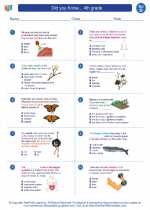Permian Period
The Permian Period was the last period of the Paleozoic Era, lasting from approximately 299 million years ago to 252 million years ago. It is known for significant geological and evolutionary events, as well as the presence of diverse terrestrial and marine life forms.
Geological Events
- Pangaea Formation: During the Permian, the supercontinent Pangaea began to form as the Earth's landmasses converged.
- Climate Changes: The Permian experienced fluctuations in climate, with extensive glaciation in the southern hemisphere and arid conditions in the interior of Pangaea.
- Mass Extinction: The Permian ended with the largest mass extinction event in Earth's history, known as the Permian-Triassic extinction event, which caused the loss of approximately 90% of marine species and 70% of terrestrial vertebrate species.
Evolutionary Events
- Flora and Fauna: The Permian saw the diversification of early reptiles, including the emergence of the first mammal-like reptiles and the dominant group of reptiles known as the archosaurs. Plant life also flourished, with the expansion of seed-bearing plants and the first appearance of conifers.
- Terrestrial Environments: The Permian witnessed the spread of forests and the development of complex ecosystems on land.
- Marine Life: The Permian seas were home to a wide variety of marine organisms, including brachiopods, ammonoids, bony fish, and the early ancestors of modern marine animals.
Study Guide
Here are some key points to focus on when studying the Permian Period:
- Describe the formation of Pangaea and its impact on global climate.
- Explain the significance of the Permian-Triassic extinction event and its effects on life on Earth.
- Compare and contrast the terrestrial and marine life forms that existed during the Permian Period.
- Discuss the evolutionary developments of early reptiles and plants during the Permian.
- Analyze the geological and environmental changes that occurred during the Permian Period.
Understanding the Permian Period provides valuable insights into the Earth's history, the evolution of life, and the impact of major geological events on the planet.
[Permian] Related Worksheets and Study Guides:
.◂Science Worksheets and Study Guides Fourth Grade. Did you Know... 4th grade
Study Guide Did you Know... 4th grade
Did you Know... 4th grade  Worksheet/Answer key
Worksheet/Answer key Did you Know... 4th grade
Did you Know... 4th grade  Worksheet/Answer key
Worksheet/Answer key Did you Know... 4th grade
Did you Know... 4th grade  Worksheet/Answer key
Worksheet/Answer key Did you Know... 4th grade
Did you Know... 4th grade 

 Worksheet/Answer key
Worksheet/Answer key
 Worksheet/Answer key
Worksheet/Answer key
 Worksheet/Answer key
Worksheet/Answer key

The resources above cover the following skills:
Core Ideas for Knowing Science
Life Science
Organisms are organized on a cellular basis and have a finite life span.